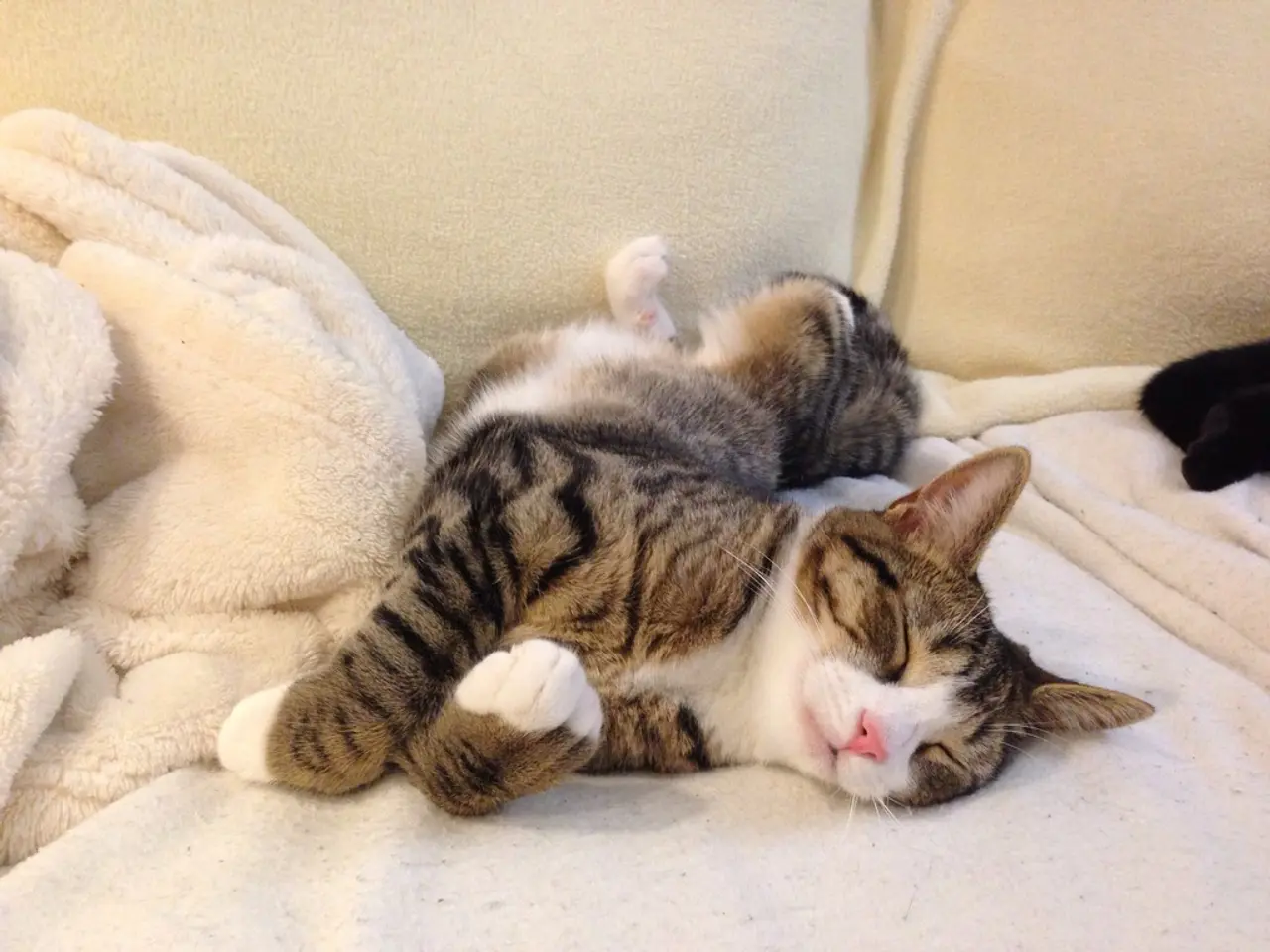Cats Generally Sleep in a Left-Sided Position, and Researchers Provide Possible Explanations
A recent study published in Current Biology has shed light on a curious behaviour observed in cats - their preference for sleeping on their left side. The research, which analysed 408 publicly available YouTube videos of cats sleeping on their sides for at least ten seconds, found that two-thirds of the felines exhibited this left-side bias.
The study's authors suggest that this sleeping position provides evolutionary benefits, as it allows cats to immediately see predators or prey with the left side of their visual field upon awakening. This alignment of the right hemisphere of a cat's brain, known for its advanced spatial abilities, can quickly coordinate rapid escape and possibly hunting functions.
However, the study warrants further investigation to explore potential factors influencing a cat's favoured sleeping position beyond the left-side bias. Beyond survival strategies and neuroscience, several environmental, emotional, and health-related factors also influence a cat's preferred sleeping position.
Cats choose sleeping positions that reflect their comfort and sense of safety. For example, when a cat sleeps belly-up or fully stretched out, it typically signifies full trust and relaxation, as this exposes vulnerable areas. Such positions occur mostly in quiet, familiar, and stable environments where the cat feels secure and undisturbed.
Cats also favour certain spots and positions based on consistent routines and environmental cues. They prefer warm, quiet places such as sunlit patches, soft cushions, or beds. The calmness of their surroundings and lack of disturbances influence whether they adopt more relaxed or guarded postures.
A cat’s health can also affect its sleeping posture. For instance, a cat in pain might curl up tightly to minimize discomfort or avoid pressure on certain areas. Conversely, a healthy cat relaxed in muscle tone might sprawl out more fully.
Some sleep positions, like the side sprawl with loose limbs and tail, indicate a state of deep, non-REM sleep and relaxation after play or meals. However, seemingly relaxed positions combined with subtle signs (like dilated pupils or twitching tails) might indicate overstimulation or baiting behaviours rather than pure relaxation.
In addition to the left-side sleeping preference linked to faster threat response, cats often choose elevated sleeping spots to limit predator access and gain better visibility. This preference affects not only where but sometimes how they position their bodies to maintain vigilance and safety.
The study's authors are encouraging cat owners to submit videos of their cats sleeping for a new study. The author invites readers to share their cats' favoured sleeping positions and provide photo evidence in the comments. As we delve deeper into the neuroscience behind cats' sleeping habits, understanding these various factors will help us appreciate the complexity of our feline friends' behaviours.
- The study invites cat owners to submit videos of their cats sleeping for further investigation, as the favoured sleeping positions of cats might reveal more about their health, emotional state, and comfort levels.
- Gizmodo reports that the science behind cats' sleeping habits is a fascinating area of research, with potential factors influencing a cat's preferred sleeping position including environmental cues, health conditions, and mental health.
- In the future, understanding the factors that influence a cat's sleeping position could lead to a better appreciation of our feline companions' complex behaviors, providing insights into their well-being and overall health-and-wellness.
- As the study continues, it may be discovered that a cat's choice of sleeping position can not only signal comfort and safety but also provide important clues about their mental and physical health status, offering opportunities for early detection and intervention in cases of illness or distress.




